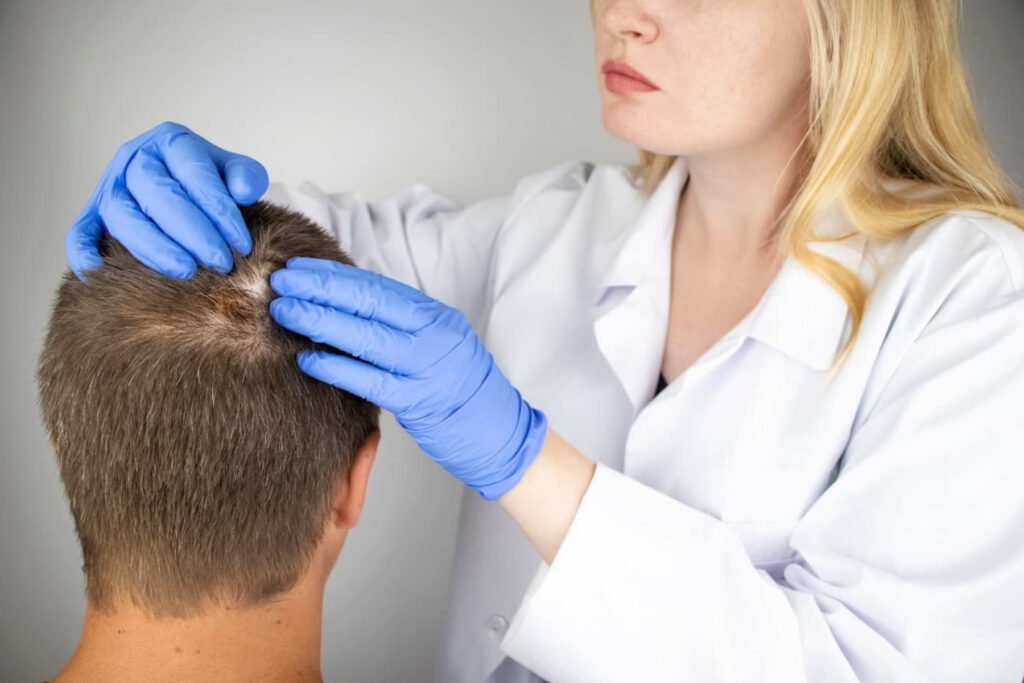Hair loss can be frustrating, confusing, and sometimes even distressing—especially when it happens unexpectedly. If you’ve noticed a bald spot on your scalp, hair falling out more than usual, or even losing hair on top of your head, you’re not alone. Millions of people, including balding women, experience different alopecia hair loss types, with alopecia areata being one of the most common. But what exactly is it? How do you know if you have it, and more importantly, what can you do about it? Let’s dive in.
Understanding Alopecia Areata and Other Hair Loss Types
The alopecia definition refers to any condition that causes hair loss. Among the types of alopecia, alopecia areata is an autoimmune disorder where the body mistakenly attacks hair follicles, causing bald spots on the scalp or even complete hair loss in severe cases. Unlike typical types of hair loss in females, which may be linked to hormonal imbalances or stress, alopecia areata is unpredictable.

There are also different types of alopecia hair loss, including:
- Alopecia Areata – Sudden hair loss in round patches
- Alopecia Totalis – Complete loss of scalp hair
- Alopecia Universalis – Total hair loss on the scalp and body
- Androgenetic Alopecia – Commonly known as male or female pattern baldness
- Centrifugal Cicatricial Alopecia (CCCA) – A scarring type of hair loss affecting primarily Black women
Each type has different causes and symptoms, making proper hair loss diagnosis crucial for effective treatment.
Hair Loss Causes and Symptoms to Watch For
The reasons behind hair falling out more than usual can vary, but some of the most common illnesses that cause hair loss in females include:
- Autoimmune diseases (like lupus or alopecia areata)
- Thyroid disorders
- Hormonal imbalances (PCOS, menopause)
- Scalp infections
- Nutritional deficiencies (iron, vitamin D)
- High stress or trauma
If you’re noticing a bald spot on the head of a woman, excessive shedding, or overall thinning, it’s best to seek medical advice. Early detection helps in preventing permanent damage to hair follicles.
Diagnosing Alopecia Areata and Other Hair Loss Patterns
Proper hair loss diagnosis starts with a thorough evaluation by a dermatologist or trichologist. They may:
- Perform a scalp examination to check the pattern of hair loss
- Conduct a pull test to determine shedding severity
- Order blood tests to rule out underlying health conditions
- Perform a scalp biopsy in cases of scarring alopecia like centrifugal cicatricial alopecia
Since types of hair loss pattern vary, an accurate diagnosis is the first step toward effective treatment.

Effective Treatments for Alopecia Areata and Other Hair Loss Types
If you’ve been diagnosed with alopecia areata or any other hair loss type, don’t panic—there are treatment options. While some cases may resolve on their own, others require medical or lifestyle interventions.
1. Medications & Topical Treatments
- Corticosteroids – These anti-inflammatory drugs help suppress the immune attack on hair follicles.
- Minoxidil (Rogaine) – A widely used topical treatment to promote regrowth.
- JAK inhibitors – Newer treatments like tofacitinib show promising results for severe alopecia areata cases.
2. Lifestyle and Natural Remedies
- Stress management – Since stress can trigger hair loss, mindfulness, meditation, and therapy can be helpful.
- Dietary changes – Nutrient-rich foods (iron, biotin, and vitamin D) support healthy hair.
- Essential oils – Some studies suggest rosemary and peppermint oil can stimulate growth.
3. Advanced Therapies
- PRP (Platelet-Rich Plasma) – Injecting your own platelet-rich plasma into the scalp to stimulate regrowth.
- Hair transplants – Best suited for losing hair on top of the head due to pattern baldness.
Final Thoughts: Addressing Hair Loss with Confidence
Hair loss, whether from alopecia areata, centrifugal cicatricial alopecia, or other conditions, can be challenging—but it’s not the end of the road. The key is understanding what’s causing it and exploring treatment options early. If you’re struggling with a bald spot on the scalp, balding women’s concerns, or different types of alopecia hair loss, consult a hair specialist. With the right approach, regrowth is possible, and confidence can be restored.
For more tips, also read

